
In the evolving landscape of home automation, smart light switches have emerged as a pivotal component that lighting contractors should be well-versed in. These devices not only enhance the functionality of lighting systems but also offer a myriad of benefits that cater to the modern homeowner’s desire for convenience, efficiency, and control. This article delves into the essentials of smart light switches, their advantages, installation considerations, and how they can transform a lighting contractor’s service offerings.
Smart light switches allow users to control their lighting remotely through smartphones, tablets, or voice-activated devices. Unlike traditional switches, these smart alternatives integrate with home networks, providing advanced features that enhance user experience.
At the core of smart light switches is their ability to connect to Wi-Fi or Bluetooth networks. This connectivity enables users to control their lights from anywhere, whether they are at home or away. Most smart switches are compatible with popular home automation platforms, allowing for seamless integration with other smart devices.
Smart switches typically utilize mobile applications, which can be downloaded on smartphones. Through these apps, users can schedule lighting, adjust brightness, and even change colors in some models. This level of control not only adds convenience but also promotes energy efficiency. For instance, users can set their lights to turn off automatically when they leave home or dim them during movie nights, which can lead to significant savings on electricity bills over time.
There are several types of smart light switches available, each designed to meet different needs and preferences. Some common types include:
Understanding these types can help contractors recommend the best options for their clients based on specific needs and existing wiring configurations. Additionally, some smart switches come equipped with motion sensors, which can automatically turn lights on or off when someone enters or leaves a room. This feature not only adds convenience but also enhances security by ensuring that areas of the home are well-lit when needed.
Furthermore, many smart light switches offer compatibility with voice assistants like Amazon Alexa, Google Assistant, and Apple HomeKit. This integration allows users to control their lighting with simple voice commands, making it especially beneficial for individuals with mobility challenges or those who are multitasking. As smart home technology continues to evolve, the capabilities of these switches are expected to expand, offering even more innovative features that cater to the modern homeowner’s lifestyle.
Incorporating smart light switches into lighting projects offers numerous advantages that can appeal to both contractors and homeowners. Here are some key benefits:
One of the most significant advantages of smart light switches is their potential for energy savings. By allowing homeowners to schedule lights to turn off when not in use or to dim lights during certain times of the day, these devices can significantly reduce energy consumption. This not only lowers electricity bills but also contributes to a more sustainable lifestyle. Moreover, many smart light switches come equipped with energy monitoring features that provide insights into usage patterns, enabling homeowners to make informed decisions about their lighting habits and further optimize their energy efficiency.
Smart light switches can enhance home security by allowing homeowners to control their lighting remotely. For instance, they can set lights to turn on and off at specific times, creating the illusion of occupancy while they are away. This feature can deter potential intruders and provide peace of mind for homeowners. Additionally, some models integrate with security systems, enabling automatic lighting responses to alarms or motion detection, which can further bolster home safety and create a more responsive security environment.
The convenience of controlling lights via smartphone apps or voice commands cannot be overstated. Homeowners can easily adjust their lighting without having to physically reach for a switch, which is particularly beneficial for those with mobility challenges. Furthermore, the ability to create lighting scenes for different activities—such as reading, watching movies, or entertaining—adds a layer of comfort and personalization to the home environment. With the integration of smart home ecosystems, users can also synchronize their lighting with other smart devices, such as thermostats or speakers, to create a cohesive and immersive living experience. For instance, dimming the lights and playing soft music can be done with a simple voice command, enhancing the ambiance for a cozy evening at home.
While smart light switches offer numerous benefits, their installation can present unique challenges. Lighting contractors should be prepared to navigate these considerations to ensure a successful installation.
Before installation, it is crucial to assess the existing wiring in the home. Smart switches may require a neutral wire for proper operation, which is not always present in older homes. Contractors should be familiar with the wiring requirements of various smart switch models to avoid complications during installation.
In cases where a neutral wire is not available, some smart switches offer alternative solutions, such as using a hub that connects to the existing wiring. Understanding these options can help contractors provide effective solutions to their clients. Additionally, contractors should be prepared to discuss the potential need for rewiring if the existing setup is incompatible, ensuring that clients are fully informed about the implications and costs associated with such changes.
Smart light switches rely on a stable Wi-Fi or Bluetooth connection to function correctly. Contractors should evaluate the home’s network infrastructure to ensure that there is adequate coverage in the areas where smart switches will be installed. In some instances, it may be necessary to recommend network upgrades or additional extenders to ensure optimal performance. This evaluation should include checking for potential interference from other devices, such as microwaves or cordless phones, which could disrupt the signal strength and reliability of the smart switches.
Once the installation is complete, educating clients about the functionality and features of their new smart light switches is essential. Providing a thorough walkthrough of the mobile app, demonstrating how to set schedules, and explaining how to integrate with other smart devices can enhance the user experience. This not only empowers homeowners but also positions contractors as knowledgeable professionals in the field.
Moreover, contractors should consider offering follow-up support or resources, such as instructional videos or FAQs, to assist clients as they acclimate to their new systems. This proactive approach can help address any questions or concerns that may arise post-installation, fostering a sense of trust and reliability between the contractor and the homeowner. By ensuring that clients feel confident in their ability to use the technology, contractors can enhance customer satisfaction and potentially generate referrals for future projects.
The landscape of smart lighting technology is continually evolving, and staying informed about the latest trends can give contractors a competitive edge. Here are some noteworthy trends to watch:
Smart light switches are increasingly being integrated with comprehensive home automation systems. This integration allows for more sophisticated control of lighting alongside other smart devices, such as thermostats, security cameras, and entertainment systems. Contractors should familiarize themselves with popular home automation platforms to provide clients with cohesive solutions. Additionally, the ability to create customized scenes—like a “movie night” setting that dims the lights and adjusts the thermostat—can significantly enhance the user experience, making it essential for contractors to understand how to implement these features effectively.
With the rise of virtual assistants like Amazon Alexa, Google Assistant, and Apple’s Siri, voice control has become a significant feature in smart lighting. Homeowners can control their lights with simple voice commands, making it easier to manage lighting in various scenarios. Contractors should consider recommending smart switches that are compatible with these voice-activated systems. Furthermore, as AI technology continues to advance, we can expect even more intuitive voice interactions, such as the ability to learn user preferences over time and adjust lighting automatically based on the time of day or the activities taking place within the home.
Many smart light switches now come equipped with advanced features such as color-changing capabilities, motion sensors, and geofencing. These features allow for greater customization and automation, enhancing the overall user experience. Contractors should stay updated on these advancements to offer clients the most innovative solutions available. Moreover, the integration of energy monitoring capabilities in smart lighting systems is becoming increasingly popular. This feature not only helps homeowners track their energy consumption but also encourages more sustainable practices by providing insights on how to optimize usage, ultimately leading to lower utility bills and a reduced carbon footprint.
Smart light switches represent a significant advancement in lighting technology, offering numerous benefits that align with the needs of modern homeowners. For lighting contractors, understanding the intricacies of these devices—from installation requirements to the latest trends—can enhance service offerings and improve client satisfaction.
By incorporating smart light switches into their projects, contractors can not only meet the growing demand for smart home solutions but also position themselves as leaders in the field. As the industry continues to evolve, staying informed and adaptable will be key to success in the competitive landscape of lighting design and installation.
Embracing smart technology is not just about keeping up with trends; it’s about providing clients with the best possible solutions to enhance their living spaces. As lighting contractors, the knowledge and expertise you bring to the table will undoubtedly shape the future of home lighting.
Ready to elevate your lighting projects with the latest smart light switch technology? Look no further than LumenWholesale for all your lighting needs. We provide contractors with top-quality, specification-grade lighting products at unbeatable wholesale prices, ensuring you get the best value for your investment. Our extensive selection is designed to meet the highest industry standards, so you can confidently deliver reliable, high-performance lighting solutions to your clients. Plus, with free shipping on bulk orders, you can enjoy premium lighting without hidden fees or compromises. Enhance your service offerings with the perfect blend of quality, affordability, and convenience. Visit LumenWholesale today and discover wholesale lighting at the best value.
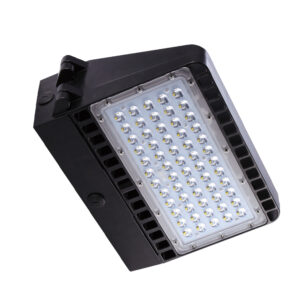
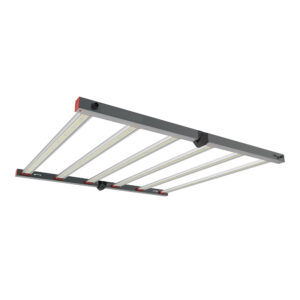
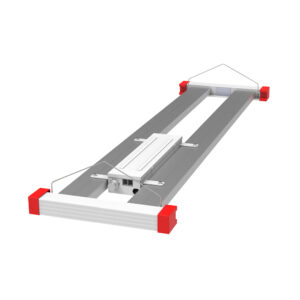
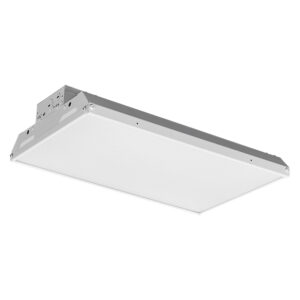
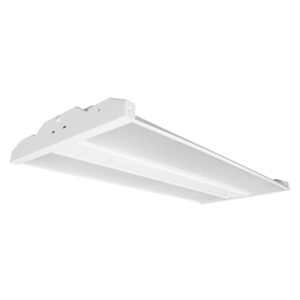
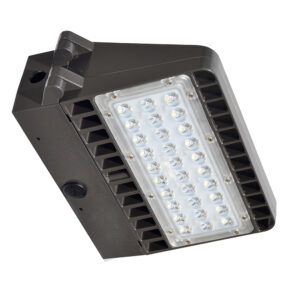

Discover the essential insights lighting contractors need to meet client expectations in warehouse projects.

Discover the essential insights lighting contractors need about metal halide lamps, from their energy efficiency and lifespan to installation tips and safety considerations.

Discover how lighting contractors can revolutionize warehouse efficiency and safety with LED lighting solutions.

Discover essential insights for lighting contractors in this comprehensive guide on light bulbs and LED tubes.
Get notified when NEW deals are released.
Optimize your budget with wholesale discounts.
Only top-quality, specification-grade lighting products.
No additional costs at checkout - what you see is what you pay.
We understand the unique needs of contractors.